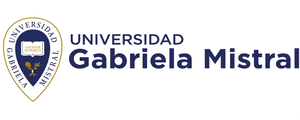Gabriela Mistral University Repository
The Gabriela Mistral University Library has developed the following Academic Repository in order to preserve, disseminate and make available the full-text contents of the academic production developed by the different actors in the academic and research field of the University.
The UGM University at the beginning of the year 2017 incorporated the UCINF University, also adding that collection where we find memories, theses, degree works, academic magazines, speeches, books, digital and sound files. Contact: [email protected]
The UGM University at the beginning of the year 2017 incorporated the UCINF University, also adding that collection where we find memories, theses, degree works, academic magazines, speeches, books, digital and sound files. Contact: [email protected]
Ovidio como fuente principal en el De amore de Andrés el Capellán
| dc.contributor.author | Martínez Sáez, Nicolás | |
| dc.date.accessioned | 2021-02-15T14:29:19Z | |
| dc.date.available | 2021-02-15T14:29:19Z | |
| dc.date.issued | 2020 | |
| dc.identifier.citation | Revista Chilena de Estudios Medievales Número 17, enero - junio 2020, pp: 67 - 72 | es_ES |
| dc.identifier.issn | 0719-689X | |
| dc.identifier.uri | http://repositorio.ugm.cl/handle/20.500.12743/2044 | |
| dc.description.abstract | La obra De amore1, escrita por el filósofo Andrés el Capellán en el siglo XII, es a la vez un manual práctico como un tratado científico sobre el amor. Fue elaborada en un momento histórico donde confluyen concepciones del amor provenientes de diversos ámbitos: la lírica trovadoresca provenzal, la cultura árabe, la tradición clerical cristiana y el código caballeresco. El presente trabajo pretende explicar cómo utilizó el Capellán la obra de Ovidio, la cual es pre-sentada como fuente principal tanto por su estructura externa como por su contenido intern | es_ES |
| dc.description.abstract | De amore, written by the philosopher Andreas Capellanus in 12th century, is at the same time a practical manual as a scientific treatise on love. It was elaborated in a historical context where conceptions of love come from different places: the Provençal troubadour lyric, the Arab culture, the Christian clerical tradition and the chivalric code. The present paper aims to explain how Andreas use the text of Ovidio, which is presented as the main source both for its external structure and its internal content. Keywords: Andreas Capellanus, Ovid, Art of loving, Christian moral, Hermeneutic | |
| dc.description.sponsorship | Universidad Gabriela Mistral - Centro de Estudios Medievales | es_ES |
| dc.language.iso | es | es_ES |
| dc.publisher | Universidad Gabriela Mistral | es_ES |
| dc.rights | Attribution-NonCommercial-NoDerivs 3.0 United States | * |
| dc.rights.uri | http://creativecommons.org/licenses/by-nc-nd/3.0/us/ | * |
| dc.subject | Andrés el Capellán | es_ES |
| dc.subject | Ovidio | es_ES |
| dc.subject | Arte de amar | es_ES |
| dc.subject | Moral cristiana | es_ES |
| dc.subject | Hermenéutica | es_ES |
| dc.title | Ovidio como fuente principal en el De amore de Andrés el Capellán | es_ES |
| dc.title.alternative | Ovid as a main source in the De amore of Andreas Capellanus | es_ES |
| dc.type | Article | es_ES |



